Shall I compare thee to a summer’s day?
Thou art more lovely and more temperate:
Rough winds do shake the darling buds of May . . . . –William Shakespeare
Last weekend the weather was spectacular, and Elisa and I took full advantage. East Beach, Galveston Island, Texas was our first stop of the weekend. We were surprised to find a large flock (100+) of American Avocets, mostly in breeding color (rusty-red/cinnamon head, neck, and breast) in the main lagoon just south of the parking area.
The main breeding range of the American Avocet is from the Texas Panhandle to south-central Canada, west to the Pacific Coast. American Avocets also breed along the South Texas Gulf Coast. There is a wintering population of Avocets all along the Gulf Coast, but we don’t typically see them in breeding colors this far north.
As we watched the ruddy-faced flock, we soon we noticed that some pairs were engaged in their charming and elegant courtship and mating behaviors. All images in this post taken with a Canon EOS 7D/600mm f/4L IS (+1.4x TC) under natural light.
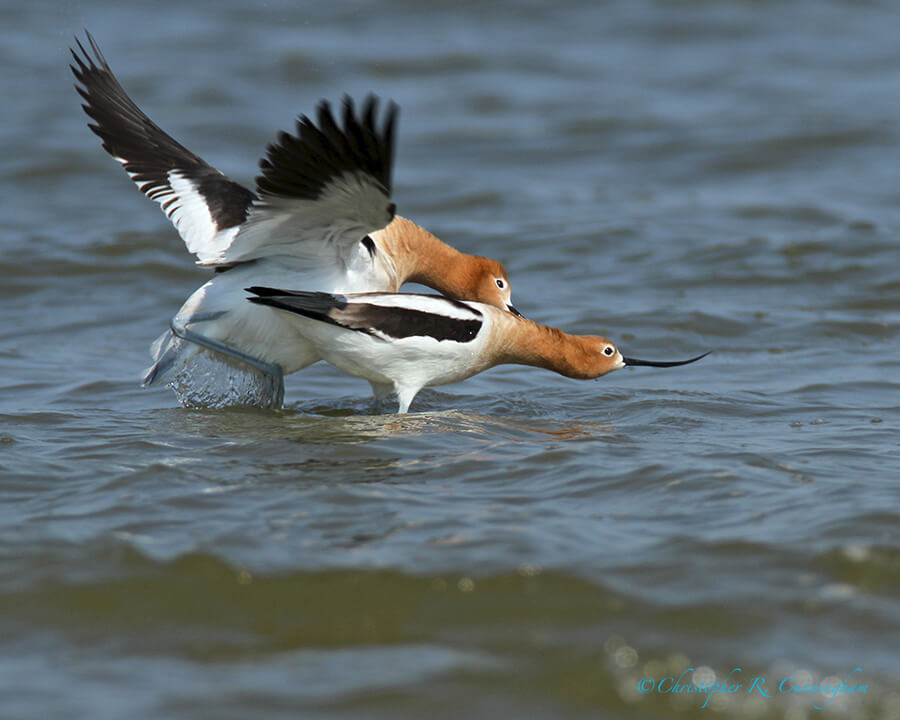
After photographing birds in the lagoon for a time, I walked south along the strand line of the Gulf. On the return hike, about a dozen Avocets flew from the lagoon and landed right in front of me in a few inches of Gulf water. One pair began courtship behavior almost immediately, as shown in this sequence of images. First, the female presented herself to the flapping and splashing male by holding her body parallel to the ground.
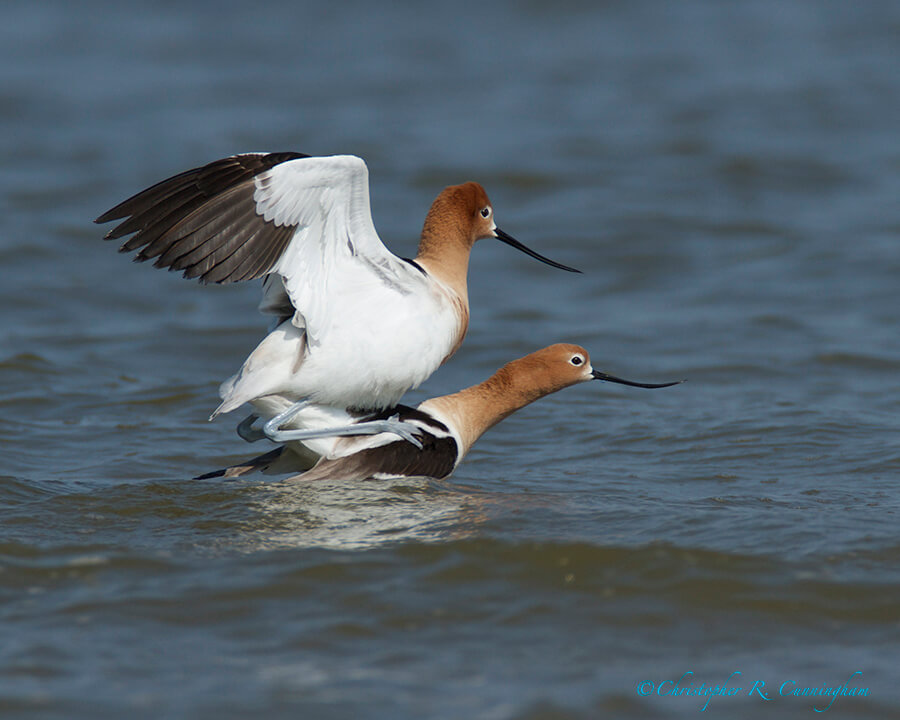
The male soon mounted the female and copulation began. In about a minute, the act was complete, and the elegant post-mating dance began . . . .
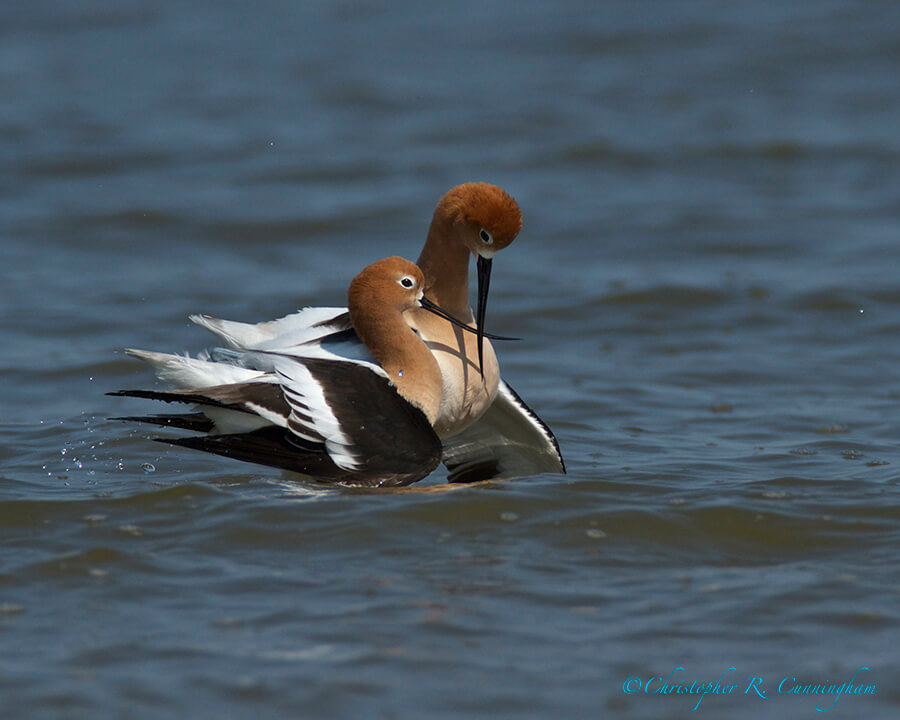
The pair crossed beaks as they walked along together. They then separated bills and walked together side-by-side, necks strongly inclined forward.
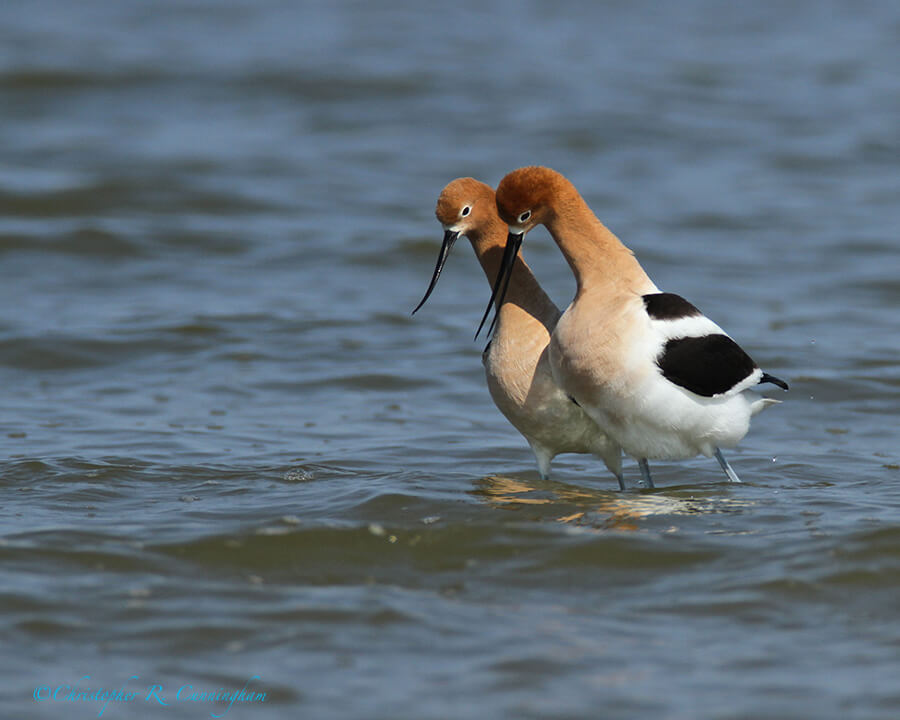
After a few seconds, the birds rotated their necks into a vertical position, with bills pointed strongly downward. The pair walked along together in this posture for a few paces. Necks became more vertical as the pair promenaded along together for a few paces, then separated. Soon, they were again threshing the water for prey.
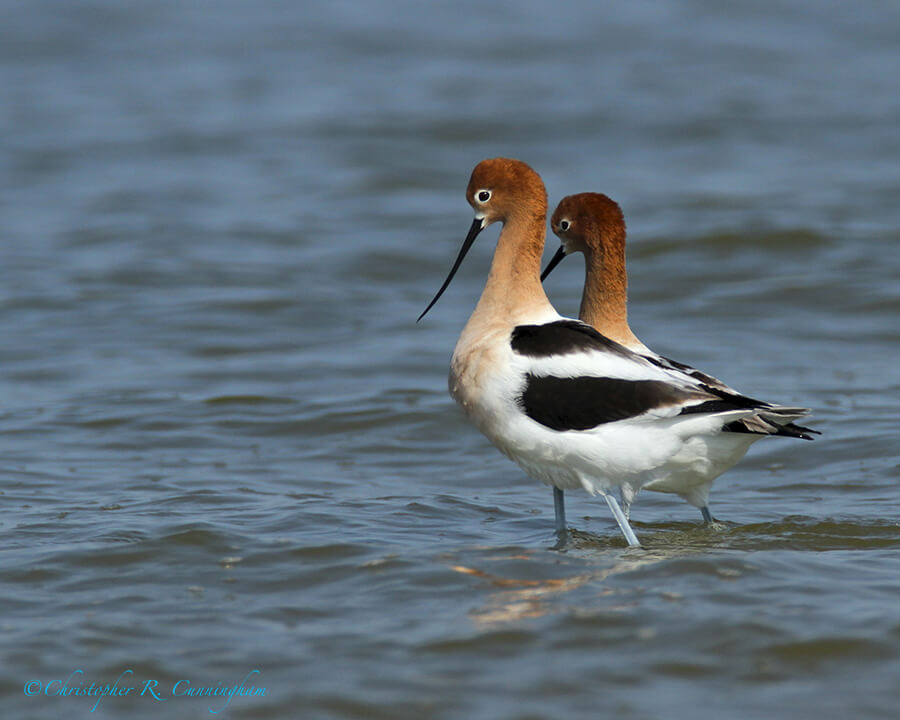
©2015 Christopher R. Cunningham. All rights reserved. No text or images may be duplicated or distributed without permission.